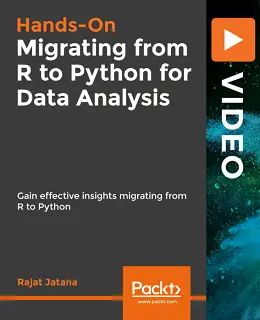Migrating from R to Python for Data Analysis [Video]

Migrating from R to Python for Data Analysis [Video]
English | MP4 | AVC 1920×1080 | AAC 48KHz 2ch | 2h 57m | 468 MB
eLearning | Skill level: All Levels
Migrating from R to Python for Data Analysis [Video]: Migrate from R to Python to perform effective data analysis
R has been the go-to language in data science for the last decade. However, given the latest developments and enhancements in Python’s capabilities and its numerous supportive libraries, Python has dethroned R and is the first choice for data science enthusiasts, especially those working on descriptive and prescriptive analytics.
In this course, you will be performing data analysis on some popular datasets from Kaggle such as the Red Wine and White Wine analysis datasets. You will see how the coding structure for Python analyses on Jupyter notebooks is drastically simplified using fewer lines of code, with far fewer dependencies. While working with powerful libraries (NumPy and pandas), you will slice and dice data for relevant insights. Moving on, you will also learn about great visualization features which are greatly enhanced, faster, and easier to use in Python 3.
- Writing and running Python in IPython
- Using Python lists and dictionaries
- Creating NumPy arrays
- Indexing and slicing in NumPy
- Downloading and parsing data files into NumPy and pandas
- Using multilevel series in pandas
- Aggregating data in pandas
By the end of this course, you will be familiar with Python functions and will be able to transform your R code into Python with far fewer lines of code, better performance, and increased speed.